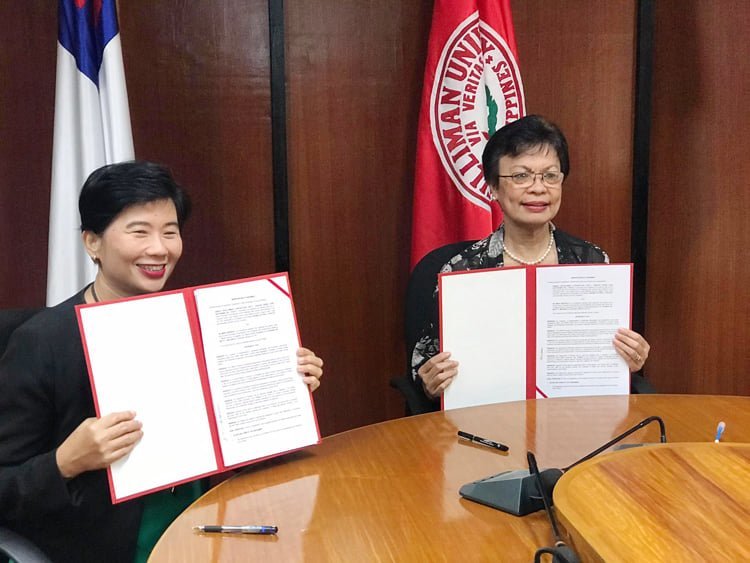
“By establishing an arboretum Silliman and EDC create a refuge for Philippine native trees that are critically endangered or at the brink of extinction due to deforestation.”
An arboretum to preserve endangered Philippine tree species will be established soon inside the Center for Tropical Conservation Studies at Silliman University’s field laboratory grounds in Palinpinon, Valencia, Negros Oriental.
This initiative is in partnership with the Energy Development Corporation. Both entities signed a virtual Memorandum of Agreement recently for the establishment of the arboretum, a garden where various tree species are grown and preserved for scientific and educational purposes.
Through the facility, Silliman University and EDC aim to provide a safe haven for the long-term survival of endangered trees. It will be a collection of Philippine threatened tree species under BINHI, EDC’s flagship environment program, to strengthen its niche on forest biodiversity, biotechnology, and conservation biology for instruction, research, and extension.

The EDC will provide Silliman University with the native tree seedlings from its priority species under BINHI as well as technical assistance in monitoring and maintaining the tree species.
Dr. Betty Cernol-McCann, Silliman University president, said during the virtual signing ceremony that the partnership with EDC’s BINHI Program helps widen CENTROP’s impact by promoting forest conservation and the preservation and propagation of threatened native tree species.
“By establishing an arboretum at our Palinpinon facility, Silliman and EDC create a refuge for Philippine native trees that are critically endangered or at the brink of extinction due to deforestation. It is our fervent hope that this arboretum may serve not only as a tree refuge and source of viable seeds for reforestation but also as a venue for student and community learning to enhance and nurture conservation and environmental awareness,” said McCann.
Over the years, CENTROP has played a significant role in the monitoring and protection of key biodiversity areas in Negros and other critical habitats within the Visayas.
Established under the university’s Biology Department, CENTROP is known globally for its captive breeding program for the following threatened and endemic Philippine wildlife species: the Philippine spotted deer, Visayan warty pig and Negros bleeding heart.
Dr. Nadia Palomar-Abesamis, Biology Department chair, said the partnership is a testament of both organizations’ steadfast commitment to preserve Philippine biodiversity and the environment and their shared belief that “great and meaningful endeavors will only succeed if we do it collectively with others.”
The latest partnership is just one of EDC’s several joint projects with Silliman University in its shared commitment to preserving the environment. It was represented by its Corporate Social Responsibility Head for Negros Norreen Bautista.
The EDC is a Filipino renewable energy company under the Lopez Group. It has its second biggest geothermal facility in Valencia, Negros Oriental. Its BINHI Program, a nationwide forest restoration thrust and the country’s largest private sector-led greening initiative, aims to restore denuded forests, preserve and propagate threatened native tree species, and protect biodiversity.
Through BINHI, EDC has planted a total of about 6.44 million seedlings since the program began in 2008 and has reforested 3,394 hectares in Negros Island. – NWI




